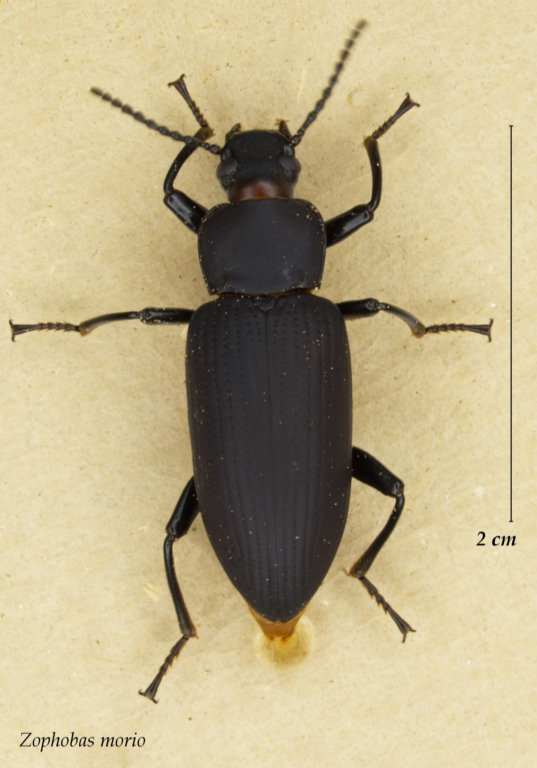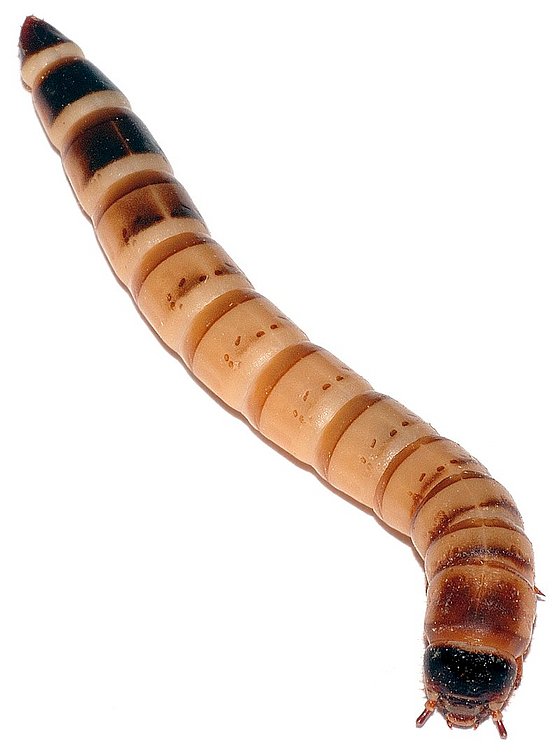
Processing of plastic waste by insects and fungi
Prof. Dr. Gela Preisfeld / Biology
Photo: Sebastian Jarych
How a larva can contribute to a sustainable circular economy
Wuppertal biologist Prof. Gela Preisfeld on sustainable recycling methods for processing plastic waste using insects and fungi
With headlines such as 'Superworms eat plastic' or 'Researchers find a fungus that eats plastic', scientists are steering the debate about our mountains of waste in a more sustainable, environmentally friendly recycling direction that uses natural life forms for a cleaner environment with fascinating findings. According to estimates, a single plastic bottle takes around 400 years to decompose completely, because "plastic is cheap, quick and easy to produce, but is extremely durable, and this hinders degradation," says Wuppertal biologist Prof. Gela Preisfeld. "It's much more dramatic than we can express." In view of our mountains of waste, this is a horror scenario. However, there are actually animals, such as the large black beetle, whose larvae could be used to help with decomposition. "The scientifically correct name for the large black beetle is Zophobas morio (Fabricius, 1776). Fabricius is the first to describe it, although the definitive species name is somewhat vague, as different species names have been given to what is actually one species," explains the scientist. "In America, it is often called the giant mealworm, although of course it is not a worm at all, but a beetle. It therefore belongs to the order Coleoptera, so the name 'superworm', as it is often called in the press, is actually wrong." It belongs to the suborder Polyphaga, which is important because this name also describes its function. Poly stands for 'much' and phagein for 'eat'. "This is a group of beetles that have a very broad food spectrum. For example, they also include the dung beetles that are native to our region," continues Preisfeld. The large black beetle is not endemic to our latitudes, its home is in Central and South America, where it also grows quite large at 5.7 cm. As beetles belong to the so-called holometabolous insects (these animals undergo a metamorphosis in their development from larva to pupa to adult insect. Editor's note), the immense feeding behavior in the larval stage is particularly useful, as the large black beetle can even ingest and digest microplastic particles.

Zophobas morio adultes Tier, CC BY-SA 3.0
Insects become waste management agents
Microplastic particles do not disappear. They only become smaller and smaller over time, accumulate in their environment and represent a dangerous burden for the environment for generations to come. However, the larvae can absorb and, above all, digest these microparticles. "It is very exciting to see how they do this," continues Preisfeld. "When you use animals like this to break down polluting materials for our environment, you call them waste management agents. That's an interesting term that already defines its task. They are supposed to break something down and are ideally used in the sense of a circular economy. The large black beetle can not only break down microparticles and other waste materials, it can also be a source of food, especially for animal fattening, but also for humans, as it is very rich in protein and fat." But how does the larva metabolize plastics? Preisfeld explains: "First, it crushes materials with its mouthparts. This increases their surface area so that enzymes can reach them better. Then it biologically degrades the polymers in the intestine and can actually remineralize the molecules by up to 40%, i.e. break them down properly to the end, so that onlyCO2 and water remain in addition to inorganic components. The main materials tested on the beetle larva were polystyrene and polyethylene, the most commonly used plastics. It was even shown that the larvae survived when fed exclusively with polystyrene." To test whether the microbiome in the insects' gut plays a role in degradation, the animals were treated with antibiotics to destroy the bacteria in the gut. Animals treated with antibiotics were no longer able to utilize these substances.

Zophobas morio Larve, CC BY-SA 2.5
Sustainable recycling helpers with the right diet
Now, you can't feed the larvae with plastic per se in the long term, but with additional food waste, of which there is plenty available, you could use them as real sustainable recycling helpers. "That brings us back to the circular economy," says Preisfeld, "the things we often throw away and put into our wastewater as pollutants could be metabolized by the larvae. The larvae could later be used again as animal feed, which would close the cycle. For example, the production of all kinds of potato products produces wastewater with an incredibly high organic load, because it contains a lot of proteins and starch. The glucose in the starch can of course be put to good use, as it is a very good source of energy and food, e.g. for the larvae." Analyses have now shown which enzymes in the intestine are involved in the digestive process when the animals are fed plastic. "As the bacteria of the microbiome in the insects' gut are involved in this process, it would be an exciting way to cultivate such bacteria and use them on a large scale." The need for such methods, which can reduce plastic waste without further environmental pollution, is incredibly high. For this reason, the microbiomes (the entirety of all viruses and bacteria that colonize living organisms, editor's note) of many insects are also being researched and discoveries are being made. "Bacteria have also been isolated from the Asian praying mantis that were able to break down another type of plastic by up to 80% after 72 hours." Bacteria of the genus Pseudomonas also have the potential to decompose various types of plastic. "So there are bacteria that can attack different plastics with different enzymes. This is very promising research." The question is always whether it is more effective to cultivate and use the bacteria taken from the animals in isolation or to use the different animals for degradation. "There is still a lot of work to be done at the technological level."
There is a great need for biological decomposition methods
However, the story of plastic-eating insects is not new. As early as 2017, there were reports of wax moth caterpillars that were able to eat through plastic. "The urgency to find biological decomposition methods has increased significantly since the pandemic," explains the biologist. "All the packaging for masks and tests, all the take-away food, etc., our plastic production has increased enormously, making it extremely difficult for the United Nations to even meet the sustainability goals."
Biological recycling plant
A study at the University of Queensland, which looked at the larvae of the great black beetle, goes even further. The next step is to cultivate the intestinal bacteria of the 'superworm' in the laboratory and further test their ability to break down polystyrene. This would allow them to find out how the process could be scaled up to a level required for an entire recycling plant. "The technical difficulty is that you have to scale it up," explains Preisfeld, "anyone who has ever grown cells knows that it's not that easy, but it can be done. The question is always whether to use the bacteria or the animals, because we are always dealing with different types of plastic. Who knows, if you had a cocktail of bacteria with different enzymes from different animals, it might work. A huge recycling plant. Our super larva with its super intestinal flora can certainly help."
Fungi offer a much wider range of enzymes
Fungi are also already being used. Certain types of fungi that have been cultivated on plastic granulate, plastic film and aluminum-coated plastic film have been able to metabolize these plastics to a large extent. All this is certainly still part of basic research. But small and microorganisms are increasingly becoming the focus of research, be it threadworms in dementia research or maggots and grasshoppers as superfoods for the food industry. This species-rich group of invertebrates and fungi are therefore becoming a secret resource. "There is a lot of potential here and fungi are promising because they have a much larger range of enzymes than bacteria," concludes the researcher. "If you examine plastic waste from the landfill, you actually see fungi on it rather than bacteria, so degradation in the wild would be more of a fungal job." In contrast to animals, they have an additional, enormous advantage. "Fungi get their nutrients by dissolving what they are sitting on and then absorbing the substances. In other words, they release enzymes to the outside, so-called exoenzymes, and this is a property that is very good for breaking down plastic, because these exoenzymes allow them to digest the surface well so that other enzymes can attach to it."
Whether larvae with super intestinal flora, isolated cultivated bacteria or exoenzymes from fungi, a scientifically sound and therefore sustainable circular economy designed in this way shows the way forward and is encouraging in times of increasing environmental pollution.
Uwe Blass
Professor Dr. Gela Preisfeld studied, obtained her doctorate and habilitated at the University of Bielefeld. After short research stays in Australia and a period as a substitute at the Goethe University in Frankfurt/Main, she was appointed to the Chair of Biology and its Didactics, Zoology at the University of Wuppertal in 2006.
